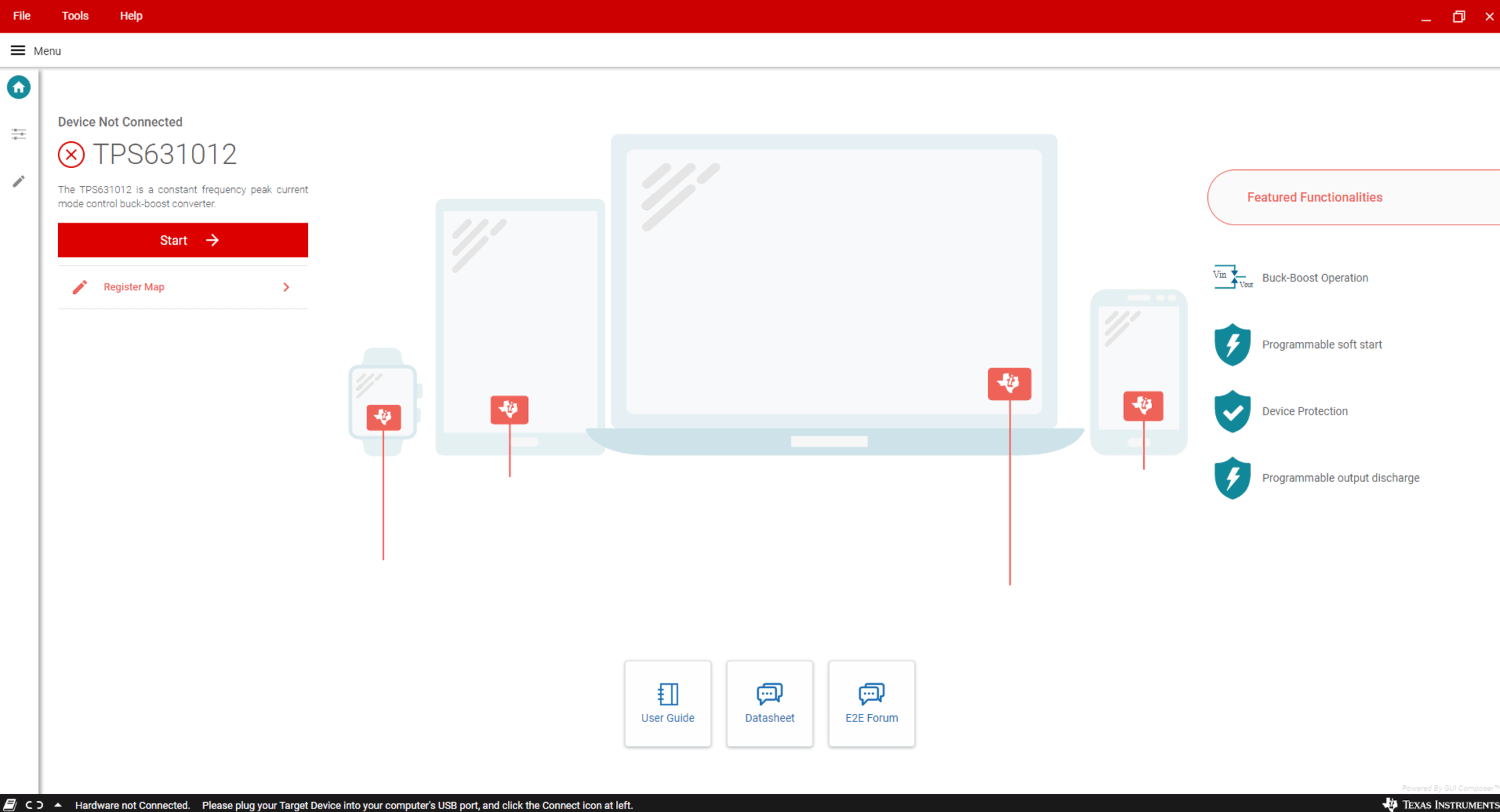SLVUD04 August 2024 TPSM83102
- 1
- Description
- Features
- 4
- 1Evaluation Module Overview
- 2Hardware
- 3Software
- 4Hardware Design Files
- 5Additional Information
3.3.1 Home Screen
The Home screen gives a short overview of the TPSM83102 and TPSM83103 devices. To start evaluating the device, click on the Start button or on the Settings or Register Map icons on the left side of the GUI window.
 Figure 3-2 GUI Home Screen
Figure 3-2 GUI Home Screen